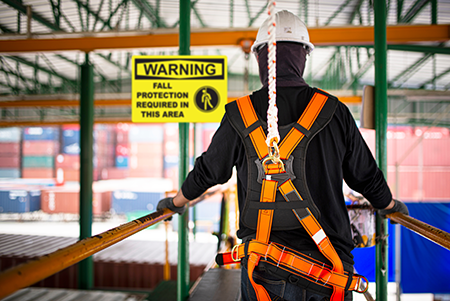Biggest OSHA Sign Compliance Challenges

When it comes to safety signs in the workplace, the struggle is real. Some workers might think, "Eh, no one reads them." Other workers might set up a few signs and forget them for years. However, not only are signs affordable tools that are important to the overall workplace safety strategy, they are an OSHA requirement. Safety signs shouldn't be a mystery. However, questions routinely abound over their functionality as well as the best and correct ways to utilize them.
Reasons for Signs
It is not unreasonable for a worker to want to know what kind of hazards are around. Each year, OSHA reports more than 4.1 million workers suffer an injury or illness on the job. Those injuries, or potential injuries, are the reason why safety signs are crucial in the workplace.
Signs are helpful to ensure worker and visitor safety, as well to help protect the workplace from lawsuits and insurance companies, according to Florida safety professional Stanley Gray. Signs are part of a solid safety program, however, "safety signs only work if workers are taught how to acknowledge them," he said.
That might beg the question: What criteria does a sign have to meet? In OSHA's rule for "accident prevention signs" (29 CFR ?1910.145), the federal agency describes signs and labels for identifying hazards that can harm people or damage property. It includes colors, symbols, and other requirements for safety signs. Signs must be able to convey the severity of the hazards present: alerting to Danger, providing a Warning, or advising Caution. They let a worker or visitor know that an area, equipment, or other workplace situation is dangerous and what, if any, precautions are necessary.
OSHA's regulation coincides with the ANSI Z535 industry standard, which is more frequently updated. OSHA permits workplaces to follow the details of this industry standard as an alternative to the specifications in ?1910.145.
Common Sign Challenges
 Signs that have functionality are important and necessary. No one wants to post a sign just for the sake of having one. Here are some common sign challenges and how to mitigate them.
Signs that have functionality are important and necessary. No one wants to post a sign just for the sake of having one. Here are some common sign challenges and how to mitigate them.
Challenge: Where should signs be placed?
Solution: Place signs at a general worker eye level and in well-lit areas near the hazard. If there is low lighting, use a sign made from reflective material. Signs should be obvious and have clear messages. Also, safety signs are not just for walls. Floor signs are great to reinforce traffic safety, such as forklift crossings and pedestrian paths. They are also great for drawing attention to first aid kits, eyewash stations, and reminding workers to wear PPE before entering an area.
Challenge: What signs are helpful during COVID-19?
Solution: Clear, bold signs are great to remind workers of the protective steps necessary during the pandemic. Use safety signs to alert guests and workers before they enter the facility, reminding them of proper handwashing techniques, distancing protocol, locations for PPE and cleaning supplies, and more.
Challenge: Where can I get signs that are specific to my workplace's needs?
Solution: A wide variety of signs are available at GraphicProducts.com, and they can be modified to suit your needs through order customization. These premade signs are available on aluminum, vinyl, PVC, and other materials. Organizations can also create fully custom designs on-site and on demand, using a DuraLabel industrial label and sign printer.
These days, new challenges to workplace safety arise frequently. New technology, changes in maintenance, and work culture can all affect the approach to safety best practices. Workplaces can use signs, labels, and floor marking as part of overarching safety programs. They are simple and cost-effective ways to achieve workplace safety goals. A workplace safety program that includes the proper use of signs will show that the workplace cares about its employees.
For more help with OSHA Safety Signs, download our free guide.
Related Resources

4 Signs Your Safety Communication Needs an Update
Safety signs and labels that are up to date, clearly worded, and in tact play a key role in achieving ...
Read
National Safety Month: Custom Signage to Combat Workplace Hazards
How Slippery When Wet Signs Prevent Common Workplace Injuries When it comes to slips, trips, and falls, one ...
Read
Five Ways to Meet OSHA Requirements for Safety Signage
Every day, American workers service high-powered equipment, build and fix roads, and manufacture the goods we ...
Read.png)





